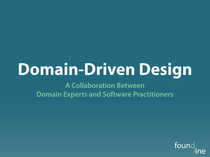In my last post about the semantic web I mentioned the XFN project which allows individuals to define their relationships to others simply using semantically marked up hyperlinks. I also said that a global graph can be made of all of these relationships making the “walled gardens” of existing social networking sites obsolete. Before I continue, I should probably mention that the word “graph” in this context refers to graph theory in computer science, not a chart or diagram (although these graphs could be visualized). At risk of over-simplifying: graph theory talks about how individual “nodes” connect to one another and how data can be extracted from looking at these connections.
Google has an interesting project called the Social Graph API that lets developers “utilize public connections their users have already created in other web services. It makes information about public connections between people easily available and useful.” It uses public XFN as well as FOAF data to accomplish this. FOAF is, interestingly enough, an example of something designed around the W3C’s Semantic Web specification. Here’s a video that explains a bit about how Google’s Social Graph API works:
The power of this open data is another example of why facebook won’t last as a walled garden. I don’t expect existing social networking sites to simply disappear. However, open standards like XFN and FOAF will help level the playing field amongst social networks by allowing even small social networks to benefit from the network effect. Having lots of social networks trying out different things can only be good for innovation in the long run.




